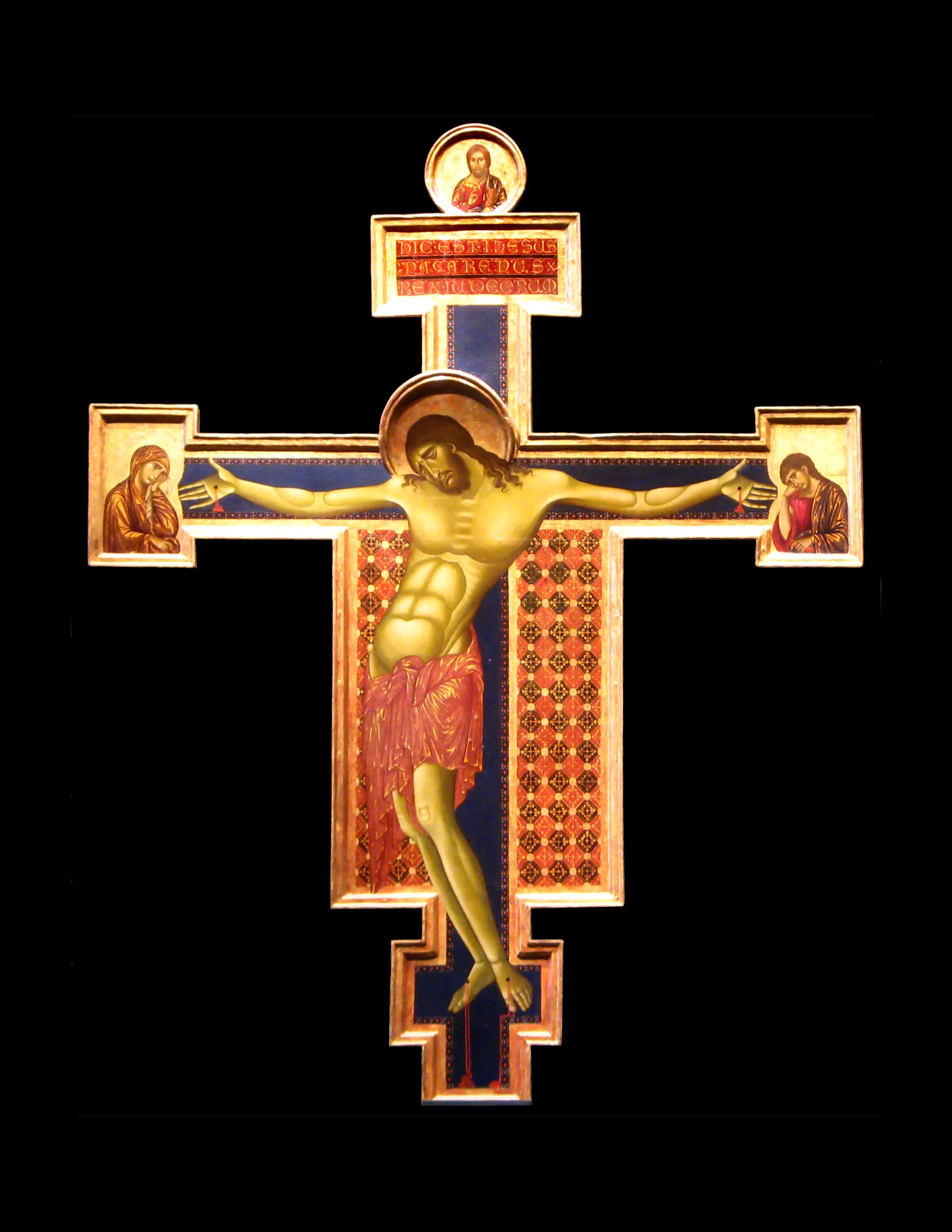
Crucifix by Cimabue at Arezzo
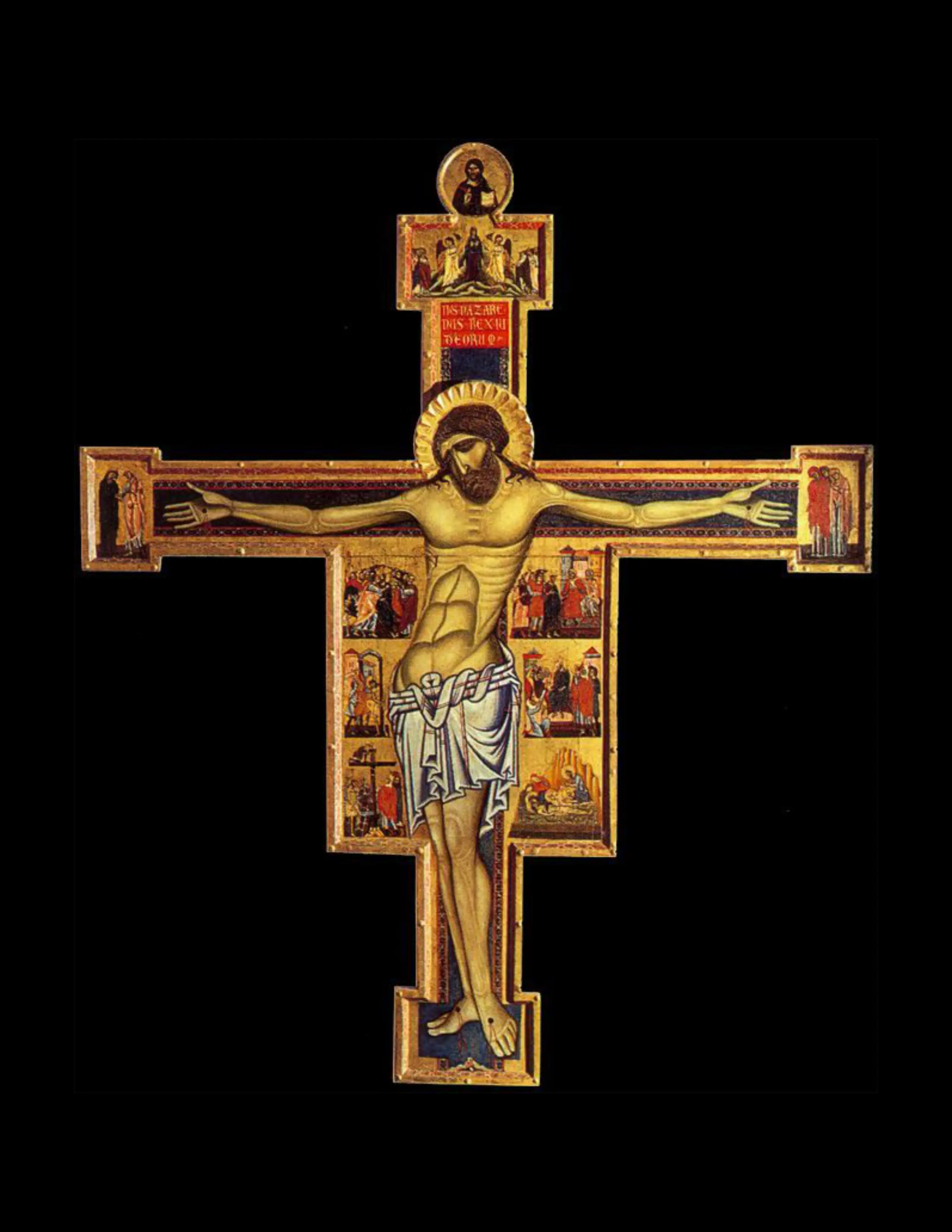
Crucifix by Coppo di Marcovaldo
Written by Aaron Parten
Italian artist Cimabue is regarded by many as a legendary figure in art history. This said though, during his lifetime he did not bask in the glory due such an evolutionary creator. Creating at the cusp of an artistic period, the works of Cimabue lent to the popularization of naturalism and realism in art. While still relying on the Byzantine style most common of the period, Cimabue’s alterations began to catch on, leading the way for the artistic movements to come, namely the Italian Renaissance. Cimabue is the first artist to be written about in Giorgio Vasari’s Lives of the Most Excellent Italian Painters, Sculptors, and Architects. Vasari was, among other practices, an author who was the first to use the term Renaissance in print. He writes of Cimabue that he “was to shed the first light on the art of painting”, solidifying his position, even among early art historians, as a pioneering figure.
The documented biography of Cimabue is one that is lacking in many areas. It is believed that he was born in 1240, in Florence, Italy, and died in 1302 at the age of 62, in Pisa, Italy. No official information is available concerning the early training of Cimabue. However, some inferences point toward influence from the likes of Italo-Byzantine painter Giunta Pisano, as well as Coppo di Marcovaldo, the latter having been a possible mentor.
Commonly known as Cimabue, the Italian artist was born Bencivieni di Pepo, or Benvenuto di Giuseppe in modern Italian. It is claimed that through a later error Cimabue became a family name. This name is best translated as “Bullheaded.” According to commenters of the time, this was a rather fitting title for the artist. There are declarations of Cimabue’s destruction of his work, no matter the value, in the face of any faults, found by others or by the artist himself. Perhaps seen as a waste in the eyes of some, it is, in part, the result of such egregious acts that Cimabue distinguished himself from the many anonymous artists of the Middle Ages.
While the stylistic approach to his work broke away from the mold, Cimabue’s physical means of production fell consistently in line with what was common of the time. Artists of this era, Cimabue included, faced far less of a “separation between the art and the craft”. This means that while an artist today will more often than not visit an art store and simply purchase all of their necessary supplies, this was not an option in the days of Cimabue. Rather than a pre-stretched canvas, Cimabue worked on primarily self-made panels of wood. Egg tempera was the “paint” medium of choice through much of history, until the 15th century with the invention of oil paints. Egg tempera is a mixture of colored pigments and the yolk of an egg, which acts as a binding agent. While egg tempera works wonderfully for paintings in terms of permanency, it is quite difficult to work with as a result of its extremely rapid drying time. In addition to the use of tempera, Cimabue worked with distemper, a thinner and more delicate type of paint, which is far less permanent than tempera. He also created in the art of mosaic, which is produced through the arrangement of many small, hard, colored objects, such as glass or stone. For better or for worse, Cimabue’s technical crafting ability, along with that of many of his contemporaries, was in many ways superior to those of present-day artists, primarily out of sheer necessity.

Crucifix by Cimabue at Arezzo

Crucifix by Coppo di Marcovaldo
In Cimabue’s work, one will recognize numerous stylistic hints to the beginning of the Renaissance. His unification of traditional Byzantine techniques, such as elongated noses and hands, will often be seen paired with advanced use of lines in, for example, a subject’s clothing. This use of line is not solely a point of decoration, but an effort to bring forth the three-dimensional aspects of the draped cloth.
Few of Cimabue’s works remain, even less with exact ties to the artist. His earliest work is believed to be a Crucifix at the Basilica of San Dominico in Arezzo, Italy. The piece is dated sometime around the year 1270 and was created using the previously discussed tempera paint. This piece alone illustrates the advancements which Cimabue was making, both in the technical process and the emotional presentation of his content. Jesus is depicted on the cross with Mary, the mother of Jesus, to his left, and John the Evangelist to his right. While we do see Cimabue’s previously mentioned technical application of lines used to give a sense of depth on Jesus’ loincloth, it is magnified on these two figures. A more life-like figure is created in the folds and hangs which are present in their draped clothing.
In the depiction of Jesus himself, the viewer is faced with greater evidence of pain and suffering than had been focused on in more traditional depictions. This is achieved through the strong contortions found in his body, along with a heavy lean toward the left, covering a portion of the cross’ decorative border. Cimabue works a deeper level of expression into this piece, bringing in a more focused humanistic element, resulting in a breakdown of any barrier between the viewer and Jesus’ suffering. At first glance, with no context, this response may be somewhat lost to a modern viewer of the piece. When compared to an earlier crucifix created by Coppo di Marcovaldo we begin to understand the drama exemplified by the exaggerated lean and stress seen in the body of Jesus. In the direct comparison of these two pieces, it is evident that Cimabue was bringing to the art world an emotionally developed stance on creation. Viewers will also note that while Marcovaldo applies some use of line to add detail to the fabric, it is used far less than in the crucifix by Cimabue. It is through these variations and additions that Cimabue was able to shed new light on something which had been created in likeness, time and time again.
In Santa Trinita Maestà, an altarpiece created for the church of Santa Trinita, Florence (now residing in the Uffizi Gallery, also in Florence), we find that Cimabue furthers his altering of the traditions found in the Byzantine style popular of the time. The image focuses on the Virgin Mary holding Jesus in her lap, surrounded by angels, with Jeremiah, Abraham, David, and Isaiah framed below. This piece glistens in golden glory, used for both function and form in the case of this altarpiece. Cimabue’s work, in these circumstances, was originally on display toward the back of what would have been a rather dark church. The luminescence of the gold would have given the painting an ability to pop and be easier seen in such an environment. Symbolically the gold represents the light of Heaven. We again see Cimabue’s use of line to give the clothing in the artwork a developed level of depth and dimension. In the detail image above, we can see that these lines provide an indication of the existence of the Virgin Mary’s knees and their influence on the flow of her clothing. This advancement aside, one may notice the disagreement of perspective found throughout. As this piece would have been hung high above the altar, it may be deemed strange that we are looking down at the throne. This dissonance continues moving down, as we can note that in the same setting, we are looking straight across at the disciples. This is not to say Cimabue did not possess the technical skill to incorporate such perspectives, rather it strengthens the fact that this was still a period of stylistic evolution. Recognizing such points, we can see that while Cimabue was on a journey to art history’s next movement, he had not yet arrived.
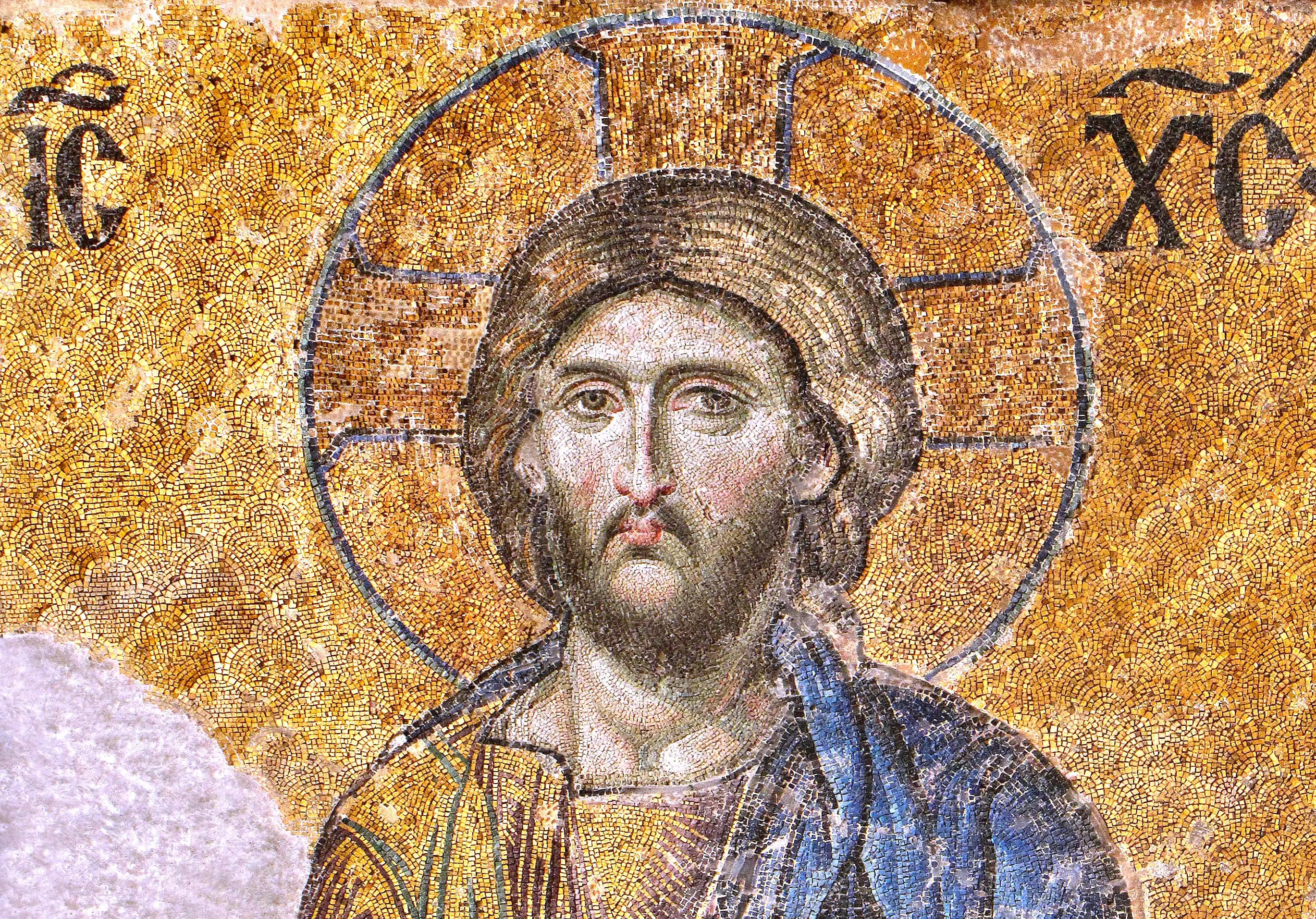
Christ Pantocrator
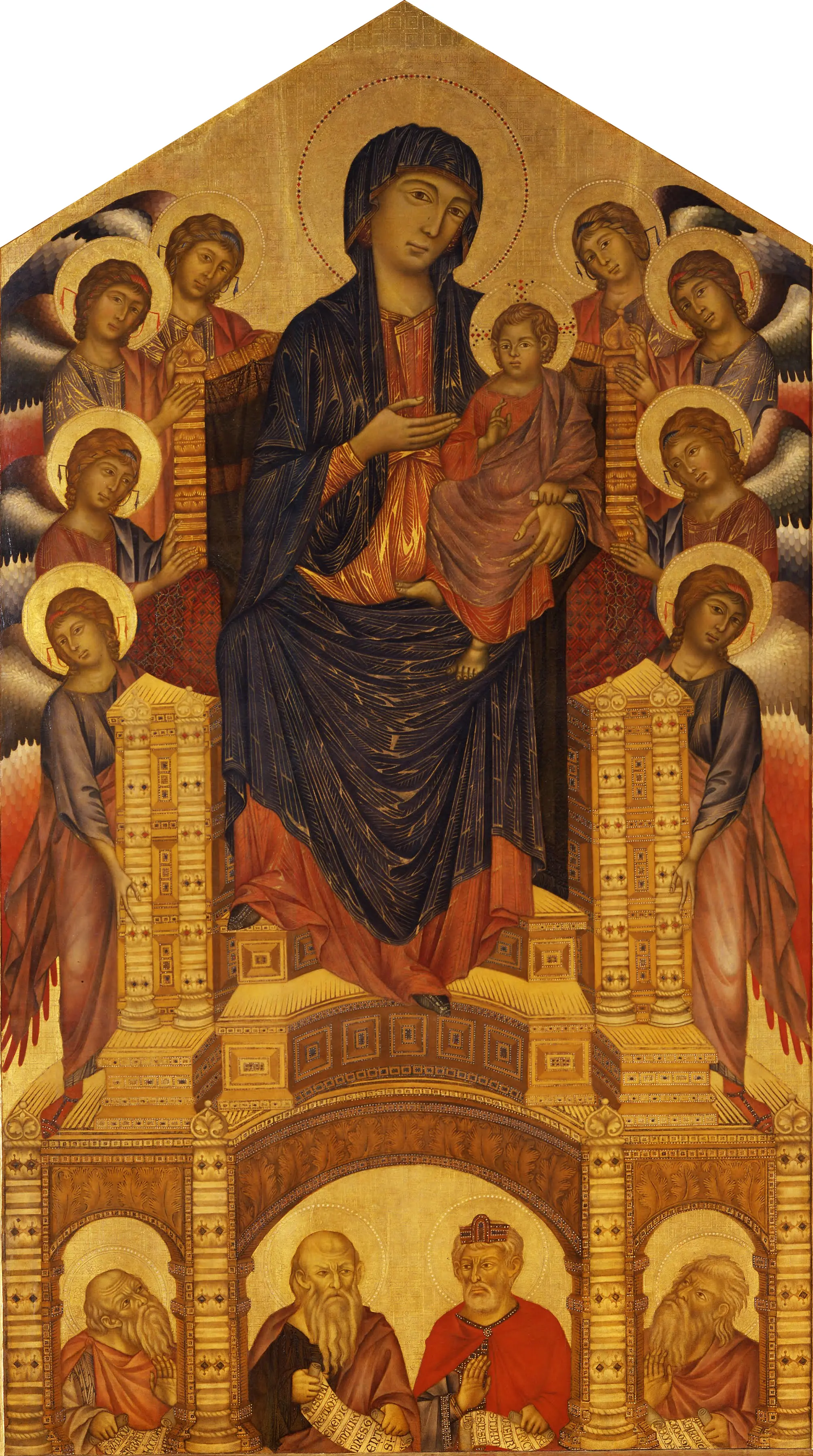
Santa Trinita Maestra
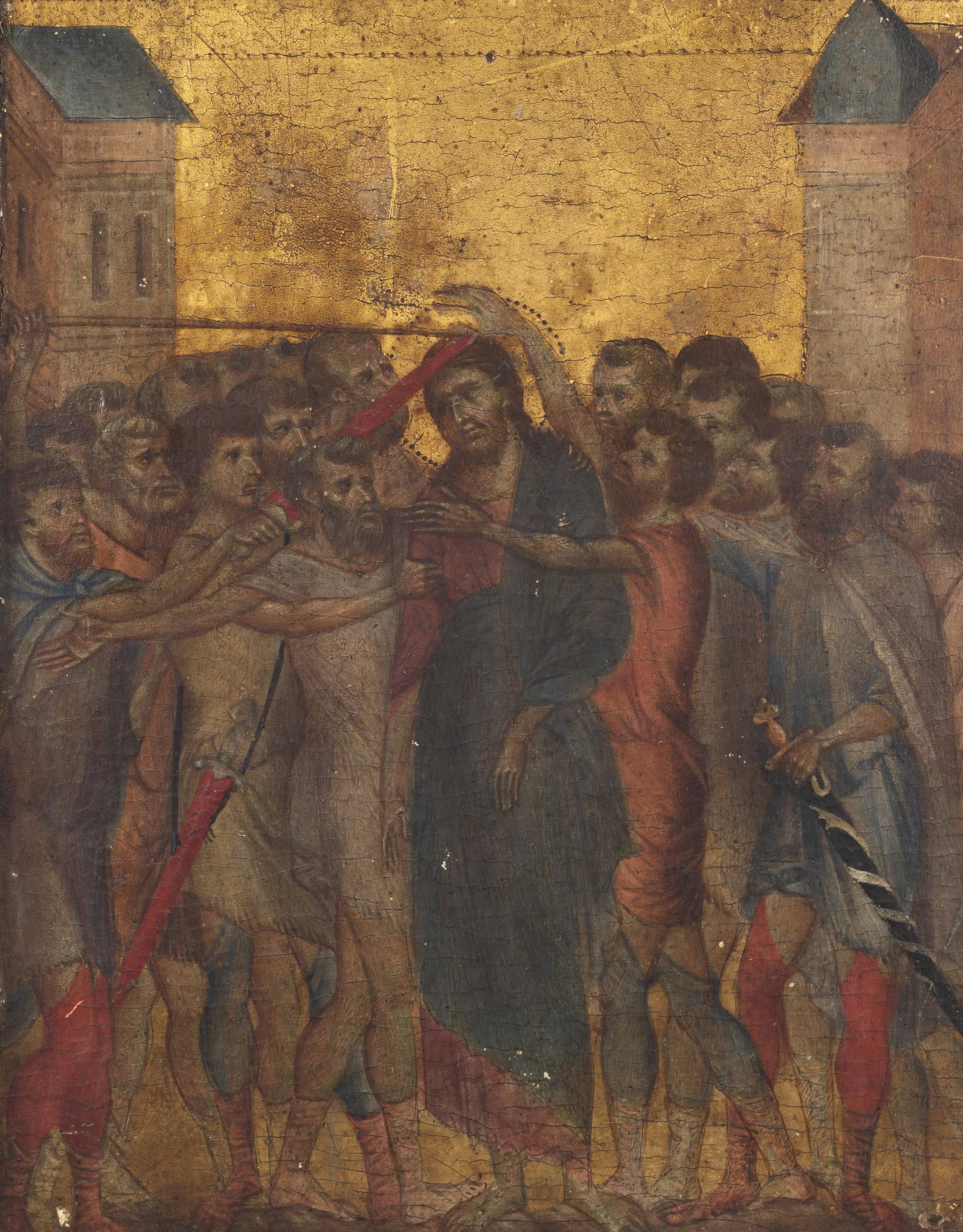
Christ Mocked
Cimabue’s most recent piece is his only with direct documentation connecting him to its creation. This is his rendition of John the Evangelist, a part of Christ enthroned with the Virgin and St John, a 151.5” x 88” mosaic in the apse of Pisa Cathedral. The entirety of this mosaic (pictured below) was the collaborative effort of three artists, including Francesco da Pisa, Cimabue, and Vincino da Pistoia. Taking over after Francesco da Pisa completed the figure of Christ, Cimabue worked on his depiction of John the Evangelist for a reported 94 days. It was not until almost 20 years after the death of Cimabue that the piece was officially finished, by Vincino da Pistoia.
A closer look at each of the three figures in this mosaic helps to reveal the chronology in which they were created. We begin with Francesco da Pisa’s depiction of Christ in the center. On its own, this rendition looks to display some levels of depth and naturalism within the lines placed on the clothing and in the hair of Christ. When seen next to Cimabue’s depiction of St. John though, Pisa's application of this technique is less than advanced. Along with Cimabue’s developed use of line to imply depth and movement, we can see shading applied beneath the jawline of Saint John. This shading continues in Vincino da Pistoia’s depiction of Mary. Pistoia’s portrayal of lifelike, naturally hanging clothing is beyond even that of Cimabue’s, and makes Pisa’s look comparatively archaic. The collaborative effort of artists relatively contemporary to one another, though during a period of evolution in the artistic world, shows points of variation working together as one. Such creations act as a timeline through a part of art history, presented in a single masterpiece.
Such a limited extant collection of Cimabue’s work means the market availability is just as limited. On October 27th, 2019 this point was cemented, as a piece by Cimabue set the record high sales price for a medieval painting sold at auction. The piece was Christ Mocked, a 10.2” by 8” painting created with tempera and gold leaf on poplar panel and was auctioned at the Actéon Hôtel des Ventes, in Senlis, Oise. The small painting was found in the kitchen of an elderly French woman and sold for $26.6 million to an anonymous buyer.
Beyond the legacy left behind by Cimabue through his paintings, the impact he had on his fellow artist helped to lead an irreversible evolution in the world of art. He left an imprint on his contemporaries, to then be passed on to the masters who would follow him. These masters include Giotto, attributed with the creation of the Florentine School, a movement from which eventually came household names such as Michelangelo, Raphael, and Leonardo da Vinci. Cimabue’s efforts to develop a naturalistic approach to art helped open the minds of later artists to new possibilities.
To reach the status of master in any discipline, one’s technical ability must of course be of the highest quality, though their endeavors must continue beyond simple creation. To mark one’s space in history, a myriad of compelling points and achievements must come together. Cimabue, while perhaps not securing his name on the common tongue quite like Leonardo da Vinci or Vincent van Gogh, is a master in his own right. The harsh self-critique and high standard to which Cimabue held himself, without limiting his creative approach, brought an evolutionary figure to the world of art. Giving himself the freedom to take influence from the masters before him, without finding restraint within what had been done, allowed for development in perspective. A new understanding of what could work in the creation of art, along with what would actually be accepted, was spearheaded by Cimabue. There is skill in creation, but there is mastery in the provision of evolutionary influence. -